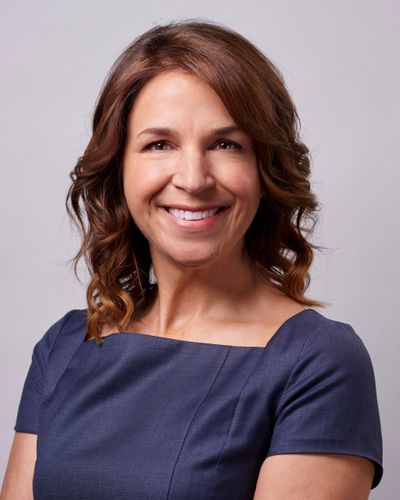Hilary Franz: Our response to the next fire season started four years ago

By Hilary Franz
With record rain and snow across Washington, it may not seem like the threat of wildfire should be front of mind. But we are about as far removed from the last fire season as we are close to the start of the next one – and if last season was any indicator, it can never be too early to prepare.
Wildfire impacts every corner of the Evergreen State. Fire season started early last year, with an unprecedented number of fires in April – a reflection of particularly dangerous conditions fueled by months of historic drought and record-setting heat.
In all, over 670,000 acres burned across the state, filling our skies with smoke and ash.
While I wish I could say the scope and danger of wildfire last year was unique, I can’t do that. The truth is: Until we take proactive action, this is our new normal. The crisis we faced in 2021 was not my first as the Commissioner of Public Lands, and it won’t be my last.
Make no mistake, 670,000 acres burned is a sobering number. But when you look at recent years – including 1.1 million acres burned in 2015 and the 800,000 acres burned in 2020 – we are seeing a positive trend thanks to the work we began four years ago.
When I first took office in 2017, the memories of the catastrophic 2015 wildfire season were heavy on my mind. As the leader of our state’s wildfire fighting force, I knew we needed to act quickly and boldly to avoid a repeat.
Unhealthy forests are at the root of our wildfire crisis. Wildfires use unhealthy forests – hundreds of thousands of weak trees that are vulnerable to insect and disease outbreaks, creating a vicious cycle that eventually goes up in flames.
I saw this reality firsthand during the 2017 fire season. Smoke blanketed the state as ash fell from the sky over Seattle and hundreds of thousands of acres burned.
That year, the Jolly Mountain Fire threatened the towns of Roslyn and Cle Elum. I watched as the flames that firefighters spent grueling days and weeks trying to put out stopped in their tracks once they hit healthy, restored forested areas.
So, a little more than four years ago, I stood not far from the burn scars of the Jolly Mountain Fire and introduced our road map to do just that: our state’s 20-Year Forest Health Strategic Plan.
In order to change the trajectory we’re on, we must tap into the power of prevention. We can’t focus solely on reacting and putting wildfires out. We must be proactive and deploy science-based strategies that prevent severe fires from happening in the first place.
We set a bold goal of conducting 1.25 million acres of forest restoration treatments to increase forest and watershed resilience by 2037. This work includes removing overgrowth primed to fuel catastrophic fires and stopping outbreaks of invasive insects before they have the chance to wipe out millions of trees.
Since launching the plan in 2017, we and our partners have treated 363,000 acres of state, federal, private and tribal lands. We are nearly 30% of the way to reaching the 1.25 million acres goal we set – putting us ahead of schedule.
This accomplishment demonstrates the success of our “all lands, all hands” strategy for addressing the forest health crisis in our state. Working with our partners at the federal, state, tribal and local levels to restore forests collaboratively and across property lines allowed us to exceed our own ambitions.
The outcome of this wildfire season proved that our model is working. Despite historically dangerous conditions on the ground, the Department of Natural Resources, our state’s wildfire fighting force, kept more than 93% of fires to 10 acres or less.
Even though we are in the early stages of implementation, our forest health work was a critical factor in containing multiple fires, including the Cedar Creek fire that threatened Twisp and Winthrop. The treatments we completed in that area in 2019 slowed the fire’s advance and kept flames low to the ground, allowing our firefighters to stop the fire in its tracks.
During the 2020 Labor Day fire event, during which more than 500,000 acres burned in less than 36 hours across Washington and 1 million acres burned in Oregon, we lost an entire town to wildfire. I challenged my team after that: “We must go faster with our forest health work: we need to move at the pace and scale of wildfire.”
Because the state legislature passed House Bill 1168 last year, which includes an unprecedented investment of $500 million in forest health and wildfire response over the next eight years, we can further accelerate the pace and scale of forest restoration across Washington.
Last fall, our Federal Lands Program used our Good Neighbor Authority agreement with the U.S. Forest Service (USFS) to scope out a forest health project covering 4,000 acres in the Okanogan-Wenatchee National Forest.
Our Prescribed Fire Program has finalized agreements with USFS, the state Department of Fish and Wildlife and other agencies that will allow us to conduct cross-boundary prescribed burning as soon as this spring.
These treatments are both effective and save money in the long run. A recent study showed that every dollar invested in forest restoration saves $1.45 on wildfire suppression costs. And spending $1 million on forest restoration generates nearly $1.7 million in economic returns.
Our strategy of rapid response and restoration across all lands and by all hands is powerful, but it will take continued investments like House Bill 1168 to not only keep up with, but also exceed, the pace we’ve set.
If the past four years has shown us anything, it’s that we can redefine our wildfire and forest health crisis.
And most important, we can keep Washington evergreen.
Hilary Franz is Washington’s commissioner of public lands.